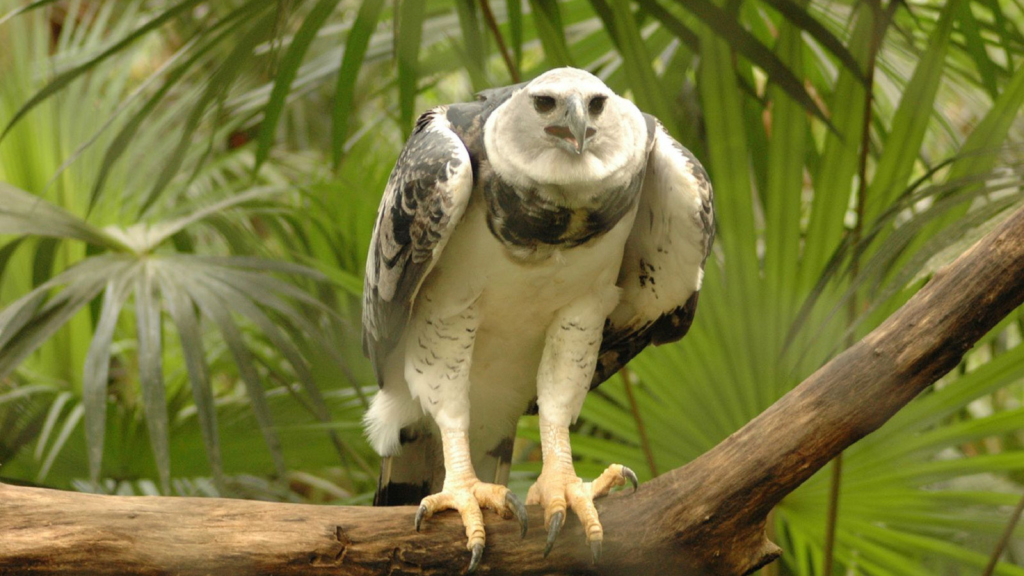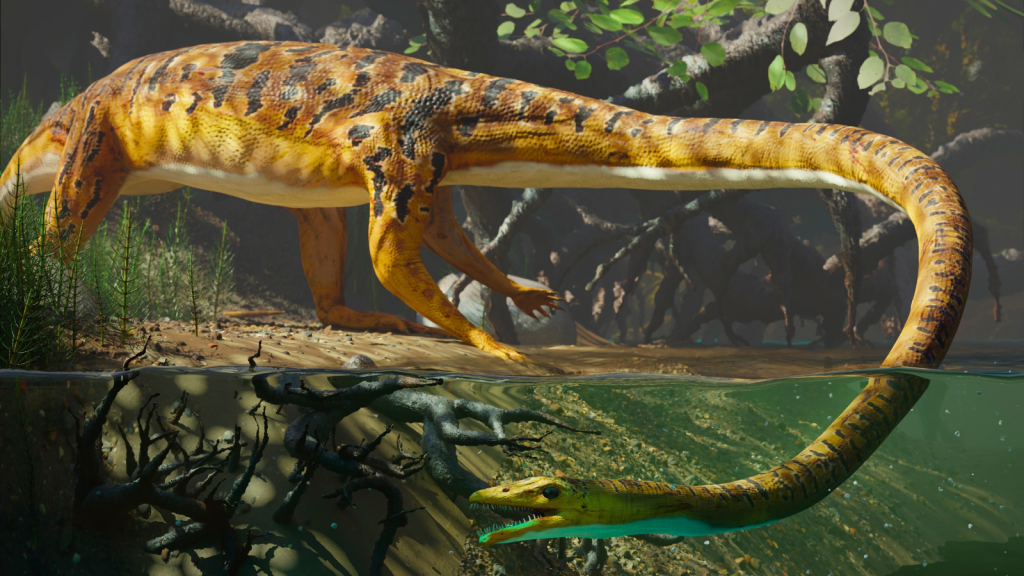Nature has equipped many creatures with formidable weapons, and among the most impressive are razor-sharp claws. These natural tools are used for hunting, defense, and even climbing. While the idea of claws cutting through steel might seem like an exaggeration, some animals possess claws so strong and sharp that they could potentially slice through thin metal sheets. From the depths of the oceans to the heart of the jungle, these animals showcase the incredible adaptations that evolution has produced. Let’s explore 14 animals whose claws are so impressive, they might just give steel a run for its money.
Giant Armadillo

The giant armadillo boasts enormous claws that can grow up to 20 centimetres in length. These powerful digging tools are primarily used for burrowing and foraging for food. The claws are so strong that they can easily tear through tough tree roots and termite mounds, making them a force to be reckoned with in the animal kingdom. Interestingly, giant armadillos have been known to dig burrows up to 6 meters deep, showcasing the incredible strength and efficiency of their claws.
Grizzly Bear

Grizzly bears are known for their immense strength and fearsome claws. These claws can reach lengths of up to 10 centimetres and are incredibly sharp. Grizzlies use their claws for digging, hunting, and climbing trees. The power behind these claws is so great that they can easily rip through flesh and bone. Grizzly bear claws are also slightly curved and non-retractable, which makes them excellent tools for digging up roots and bulbs, a significant part of their diet.
Harpy Eagle

The harpy eagle possesses some of the largest and most powerful talons of any bird. These claws can measure up to 13 centimetres long, rivalling those of many large mammals. Harpy eagles use their impressive talons to snatch up prey as large as monkeys and sloths, effortlessly piercing through skin and muscle. The grip strength of a harpy eagle’s talons is estimated to be about 530 PSI (pounds per square inch), strong enough to crush human bone.
Giant Ground Sloth (Extinct)

Although extinct, the giant ground sloth deserves a mention for its incredible claws. These prehistoric beasts had claws that could grow up to 50 centimetres in length. Scientists believe these massive claws were used for digging, pulling down tree branches, and defense against predators like sabre-toothed cats. Fossil evidence suggests that giant ground sloths could rear up on their hind legs, using their powerful claws to reach vegetation up to 6 meters high.
Wolverine

Despite their small size, wolverines are renowned for their strength and tenacity. Their claws are semi-retractable and can grow up to 4 centimetres long. These sharp tools are used for climbing, digging, and hunting. Wolverines have been known to take down prey much larger than themselves, thanks in part to their formidable claws. Their claws also help them climb snowy mountains and dig through frozen soil to access food caches or create dens.
Cassowary

The cassowary, a large flightless bird native to Australia and New Guinea, sports dagger-like claws on its inner toes. These claws can grow up to 12 centimetres long and are sharp enough to cause serious injury. Cassowaries primarily use their claws for defense, and they’re considered one of the most dangerous birds in the world. These birds can deliver powerful kicks with their clawed feet, capable of inflicting deep gashes or even disemboweling potential threats.
Leopard Seal

Leopard seals have large, sharp claws that help them grip slippery prey like penguins and fish. Their claws can grow up to 2.5 centimetres long and are incredibly strong. These marine predators use their claws in conjunction with their powerful jaws to tear apart their catches. Leopard seals also use their claws to maintain grip on ice floes, which serve as essential resting and hunting platforms in their Antarctic habitat.
Giant Pangolin

The giant pangolin, found in Africa, has impressive claws that can reach lengths of up to 10 centimetres. These claws are primarily used for digging and breaking into termite mounds. The strength of these claws allows pangolins to easily tear through hard soil and even concrete if necessary. When threatened, giant pangolins can also use their claws as defensive weapons, slashing at predators while curled up in a protective ball.
Komodo Dragon

Komodo dragons possess sharp, curved claws that can grow up to 4 centimetres long. These claws are used for hunting, climbing, and digging. Combined with their powerful legs and venomous bite, Komodo dragon claws make them formidable predators capable of taking down large prey like deer and even water buffalo. Their claws are also instrumental in tearing apart carcasses, allowing them to efficiently consume their kills.
Sloth Bear

Sloth bears have some of the longest claws relative to their body size of any bear species. Their claws can grow up to 10 centimetres in length and are used primarily for digging up insects. These powerful tools allow sloth bears to easily rip apart termite mounds and dig up underground bee nests. The shape and strength of their claws also make sloth bears excellent climbers, enabling them to escape danger and access food sources high in trees.
Therizinosaurus (Extinct)

This extinct theropod dinosaur had some of the longest claws of any known animal, measuring up to 80cm in length. Scientists believe these massive claws were used for defense and possibly for pulling down branches to feed on vegetation. The sheer size and strength of these claws would have made Therizinosaurus a formidable creature. Recent studies suggest that these claws might have also been used for digging or probing for food in soft sediments, showcasing their versatility as a survival tool.
Secretary Bird

The secretary bird, native to Africa, has sharp talons that it uses in a unique way. Instead of grabbing prey like other birds of prey, secretary birds stamp on their victims with incredible force. Their talons, while not exceptionally long, are incredibly sharp and strong, allowing them to kill snakes and other dangerous prey with precision strikes. The force of a secretary bird’s kick has been measured at five times its body weight, demonstrating the incredible power behind their taloned feet.
Coconut Crab

The coconut crab, the largest terrestrial arthropod, possesses powerful claws that can exert a force of up to 3,300 newtons. These claws are not only strong but also incredibly sharp. Coconut crabs use their claws to open tough coconut shells and can easily tear through other hard materials. Their impressive grip strength allows them to climb tall palm trees to access coconuts, and they’ve even been known to carry off small animals and shiny objects that catch their interest.
Mantis Shrimp

While not technically claws, the mantis shrimp’s powerful appendages deserve a mention. These small marine creatures can strike with the force of a .22 caliber bullet. Their “punching claws” move so quickly that they create cavitation bubbles in the water, which collapse to produce an additional shock wave that can stun or kill prey. The mantis shrimp’s strike is so powerful that it can break through aquarium glass, and some species can even produce light through a process called triboluminescence when they strike.
Meet the Wolf Spider | One of Britain’s Biggest Spiders

Wolf spiders are a remarkable group of arachnids found across the UK and around the world. These agile hunters get their name from their wolf-like hunting style, actively chasing down prey rather than spinning webs. With their large eyes and hairy bodies, wolf spiders might look intimidating, but they’re actually quite beneficial to gardens and homes. These spiders help control pest populations and are generally harmless to humans. From their unique parenting techniques to their impressive hunting skills, wolf spiders are full of surprises.
Read More: Meet the Wolf Spider | One of Britain’s Biggest Spiders
15 Animals That Eat Hornets

Nature never fails to amaze me. Who would’ve thought so many creatures would prey on hornets? Their painful stings and fierce and aggressive behaviour make them seem like a pretty unappetizing meal to me. While hornets might seem like formidable insects that few creatures would dare to tangle with, they actually have quite a few natural enemies. From nimble birds to crafty mammals, plenty of other creatures make meals out of these stinging insects.
Read More: 15 Animals That Eat Hornets
Becky is a fervent wildlife enthusiast and pet care expert with a diploma in canine nutrition. Her love for animals stretches beyond the domestic, embracing the wild tapestry of global fauna. With over a decade of experience in animal welfare, Becky lends her expertise to OutlandishOwl through insightful articles, captivating wildlife information, and invaluable guidance on pet nutrition. Her work embodies a deep commitment to understanding the intricate lives of animals and a passion for educating others on sustaining natural habitats. Becky's hands-on conservation efforts and her knack for translating complex dietary science into practical pet feeding tips make her an indispensable voice for creatures great and small.




